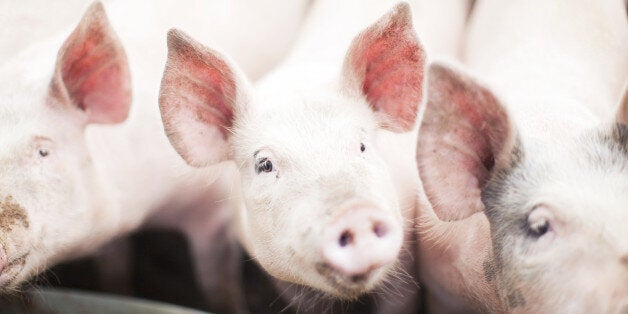
Antibiotics serve as the foundation of modern medicine. We rely on them for everything from treating small cuts and scrapes to protecting patients from infections during open-heart surgeries. And yet antibiotic resistance -- when bacteria do not respond to the drugs designed to kill them -- threatens to dismantle nearly 100 years of medical advances.
We are already seeing the health and financial impacts of these so-called "superbugs." Around 23,000 Americans die from antibiotic resistant infections each year and thousands more succumb to longer, riskier, and more expensive hospital stays. Antibiotic resistance costs the United States $20 billion a year in direct health care expenses and $35 billion a year in lost productivity.
Tom Frieden, the Director of the Centers for Disease Control and Prevention, recently called antibiotic resistance "one of the biggest health threats of our time ... a ticking time bomb." And in its most recent report, the President's Council of Advisors on Science and Technology offers recommendations to address this growing crisis, including: creating an interagency task force, increasing funding for public health surveillance and response, and creating new antibiotics.
These are all important steps in addressing antibiotic resistance in the United States. However, a common misconception is that antibiotics are primarily used in clinical medicine. While antibiotics are an essential part of the health care we receive, the vast majority of antimicrobials are used for industrial animal agriculture -- around four times the amount used in human medicine.
These antibiotics are not used therapeutically but to promote faster growth of animals and compensate for unsanitary and overcrowded living conditions. The poultry and livestock industries in the United States use 30 million pounds of antibiotics each year. Many of these same antibiotics are used to treat human illnesses. Their overuse in animals leads to the creation of antibiotic resistant strains that in turn can infect humans.
The health care sector has a vested interest in protecting the efficacy of antibiotics, and doctors have already begun to reduce the overuse of antibiotics in human medicine. Now, the next step for the health care sector is to expand their roles as antibiotic stewards by shifting away from purchasing and serving meat raised with non-therapeutic antibiotics.
Health care food service is a $12 billion per year industry and individual hospital food budgets can range from $3 to $8 million per year. Healthy food is an essential component to the care hospitals provide, and hospitals must use their economic clout to support ranchers and farmers who raise animals without antibiotics. In addition to providing better care to patients, these shifts in purchasing will transform the U.S. market for sustainable food production.
Experience in Europe shows that eliminating the routine use of antibiotics in animal agriculture does not affect the health of the animals and it does not have a negative financial impact on the agriculture industry. Denmark, one of the largest pork exporters, got rid of nearly all non-therapeutic antibiotics given to their poultry and swine in 1999 without any negative affects on the animals, farmer profits, or consumer meat prices.
This movement towards safe, antibiotic free meat is gaining momentum. To date, over 200 hospitals across the country are reducing the amount of meat they serve and are purchasing sustainably raised meat instead. Last spring, the University of California at San Francisco Medical Center passed a resolution to phase out the purchase of meat raised with unnecessary antibiotics and pushed for all the other University of California campuses to follow suit. This past April, the University of California at Los Angeles Medical Center announced it is going to serve grass-fed antibiotic free beef and chicken in its hospital. Kaiser Permanente, the nation's largest non-profit health system, has also decided to buy antibiotic free meat in large quantities. Momentum is building across the entire health care sector.
And it's not just hospitals that have recognized a need to change: More than 800 health professionals recently signed a petition to FDA Commissioner Margaret Hamburg calling for leadership on the growing antibiotic resistance crisis. These individuals join a growing movement that recognizes the essential role sustainable food production plays in preserving our health.
Ending the use of non-therapeutic antibiotics in animal agriculture is a matter of protecting public health as well as the environment. The transition from animals raised with non-therapeutic antibiotic can be a seamless one that would make an enormous difference on the future of medicine. The health care sector has a responsibility to prioritize this shift.
